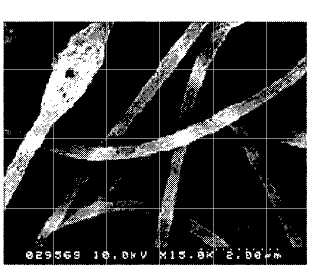Method for Producing Photo-crosslinkable Nanoparticles in a Continuous Reactor
The present invention relates to a method for producing photo-crosslinkable polymer nanoparticles having diameters less than or equal to 100 nm and polymer nanoparticle dispersions that can be obtained therefrom. For this purpose, monovinyl compounds are radically copolymerized with divinyl compounds in the presence of an anionic surfactant in a continuous reactor. The monovinyl compounds are, for example, acrylates, methacrylates, styrenes, vinyl acetate, acrylonitrile, monohalogen ethylenes, dihalogen ethylenes, trihalogen ethylenes, tetrahalogen ethylenes, maleic anhydrides, and oxepanes. The divinyl compounds are, for example, divinylstyrene, butadiene, isoprene, allyl acrylates, allyl methacrylates, cyanoacrylic acid allyl ester, and unsaturated polyester. The anionic surfactant is preferably sodium lauryl sulfate. The polymer nanoparticles thus obtained can then be processed together with a non-ionic surfactant and a matrix polymer to form an aqueous polymer nanoparticle dispersion. The non-ionic surfactant or matrix polymer is, for example, PEG or PVA. Polymer fibers can be produced from said polymer nanoparticle dispersions by means of electrospinning. The polymer nanoparticles that can be obtained using the method according to the invention and the fibers that can be produced from the nanoparticles can be used as polymer additives for varying rheological properties, for varying glass transition points, for varying the wetting behavior, and for modifying the surface of polymers.Attached files:

Patents:
WO 2,010,086,408
Inventor(s): AGARWAL SEEMA [DE]; GETZE JULIA [DE]
Type of Offer: Sale
« More Crystallography Patents
